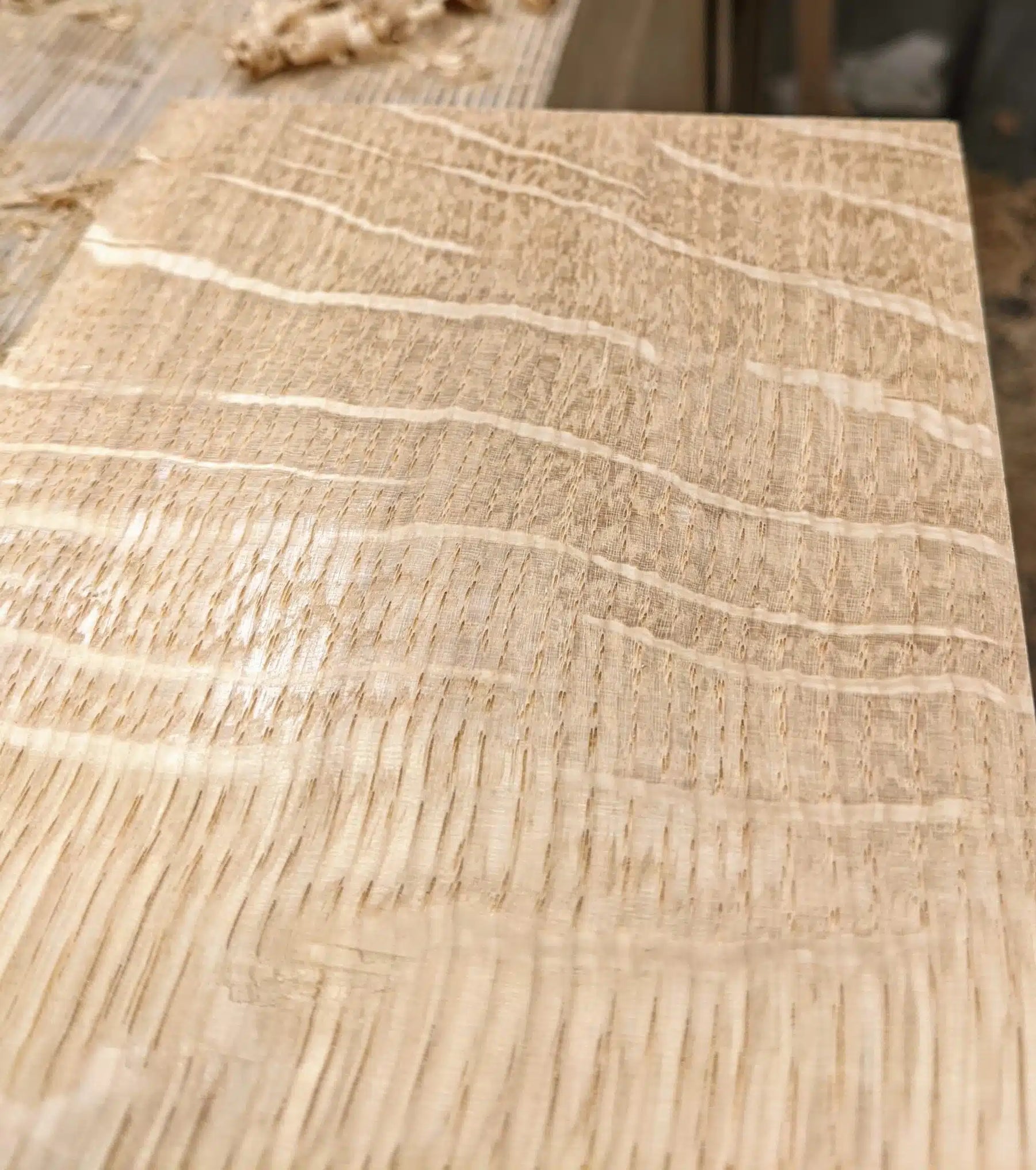
What are Medullary Rays?
The pale, wisp-like stripes streaking across an oak board, often mistaken for imperfections, are actually called "Medullary Rays." These unique features are not flaws, but are inherent to the oak’s natural structure. Medullary Rays are thin, ribbon-like structures that run vertically through the wood, perpendicular to the growth rings. Like veins, they serve as pathways through which nutrients and fluids are transported from the outer bark to the heart of the trunk, playing a crucial role in the tree’s growth and nourishment.

Medullary Rays extend radially from the centre of the tree and, depending on how the wood is cut from the trunk, can appear as these striking patterns or highlights in sawn wood, that contribute to the distinctive appearance and texture of oak. In the world of woodworking and interior design, Medullary Rays are highly valued for the character and depth they add to oak furniture, as their visibility in the wood is a testament to the quality of the cut and the natural beauty of the oak. These rays are much more prominent in quarter sawn timber, as this unique cutting method exposes these radial structures.
What is Quarter Sawn Oak
Quarter sawn oak has a rich history, you can trace its roots back to the Middle Ages when it was first used for Gothic furniture. By the 14th century, quarter cut oak boards were being imported to Northern Europe. Although there are various species of oak, White Oak is typically chosen for quarter sawing today. This method of cutting oak became especially prominent in the early 20th century as a hallmark of quality, which also incorporated other materials like mahogany and ebony, nevertheless, quarter sawn oak remained the preferred wood.
In recent decades, however, modern saw mills waste nothing, they make use of everything but the shade from the tree. The leftovers after the dimensional timber is cut is chipped or pulverized into composite board, pulp, or paper products.
Despite this, quarter sawn lumber has become much less common because producing plain sawn timber is so much more efficient. Producing quarter sawn boards yields less wood per tree and requires more labour; consequently, quarter sawn boards are far more expensive, so sadly most modern furniture today is made from plain sawn timber.
Quarter sawing involves cutting the log at a 90-degree angle to the growth rings, resulting in a vertical, uniform grain pattern. This technique produces boards with straight, tight grain lines running the length of the board. When the growth rings are close to 90 degrees from the face of the board, distinctive medullary ray flecks appear, adding to the wood's aesthetic appeal. Other grain patterns, such as wavy and interlocked grains, also enhance the wood's beauty.

Structurally, quarter sawn oak is a much stronger cut, less prone to twisting, warping, and cupping, holds finishes better, and is more resistant to liquid penetration.
The labor-intensive process of producing quarter sawn timber involves first cutting a log into quarters, then alternately cutting boards from each face until the quarter is fully sawn. This meticulous method contrasts with the more efficient plain sawing, which produces more boards with less waste.
Each oak board that showcases Medullary Rays is unique, and far from being a defect, the appearance of these rays is one of the defining charms of oak wood used in furniture design. These rays enrich the wood’s natural grain, offering a visual treat, complexity, and a sense of connection to the natural world.

Leave a comment